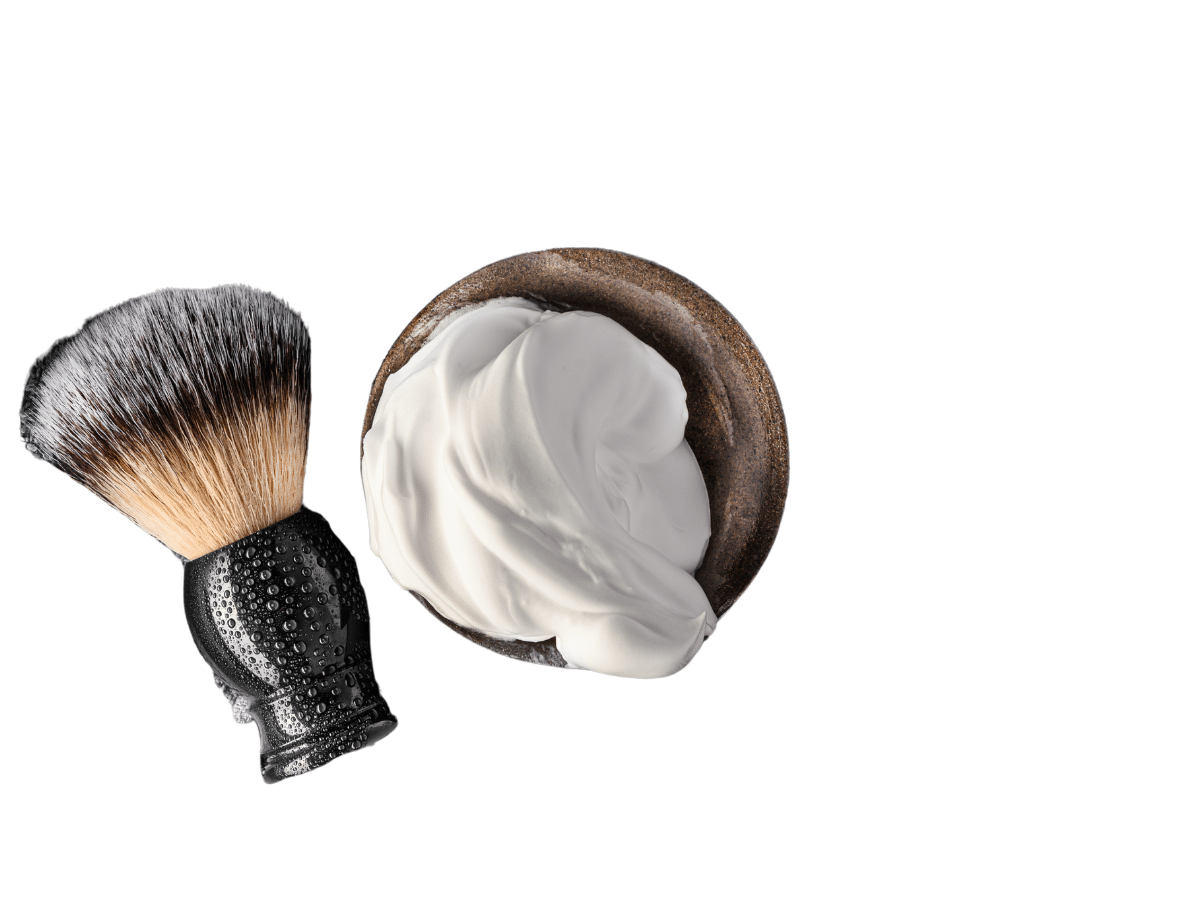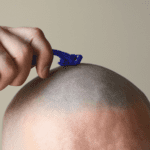Introduction: Rediscovering the Art of Shaving Soap
How to Use Shaving Soap is more than a grooming lesson—it’s a reawakening of a lost ritual. In a modern world of instant-gratification grooming products and chemical-laden shaving foams, the return to traditional wet shaving signals a desire for something more intentional, more refined, and more respectful to both skin and spirit. Shaving soap, with its old-world charm and undeniable effectiveness, invites you to slow down and reconnect with the process. It’s not just about removing hair—it’s about creating a moment of mindfulness and luxury in the everyday routine.
Using shaving soap is a tactile experience. From the warmth of the lather to the subtle aroma that rises as you whip the brush, it turns a simple shave into a multi-sensory ritual. It rewards patience with precision and replaces irritation with invigoration. This complete guide explores everything you need to know to master the technique, from choosing the right soap and brush to perfecting your lather and achieving the smoothest, most comfortable shave of your life.
What Is Shaving Soap?
Shaving soap is a specially formulated soap designed to create a rich, slick lather that cushions the skin and softens facial hair for a smooth, irritation-free shave. Unlike regular body soaps, shaving soaps are enriched with moisturizers, emollients, and ingredients that help the razor glide effortlessly without tugging or cutting.
A Brief History of Shaving Soap in Men’s Grooming
Dating back to the 18th century, shaving soap was once the gold standard in grooming, with gentlemen frequenting barbershops where the brush-and-bowl method reigned supreme. From the aristocracy of Europe to soldiers in the trenches, shaving soap has long been revered for its reliability, utility, and gentlemanly appeal.
Shaving Soap vs. Shaving Cream: What’s the Difference?
Shaving soap typically comes in a solid puck or semi-soft form, requiring a brush to generate lather, while shaving cream is often pre-whipped and ready to apply. Soaps tend to last longer, provide a denser lather, and allow for more control over consistency and hydration—ideal for wet shaving aficionados.
Why Many Modern Men Are Returning to Traditional Shaving
From sustainability to skincare, there are numerous reasons for the resurgence of traditional shaving. Shaving soaps often come in plastic-free packaging, last longer, and contain fewer synthetic additives. More importantly, the method fosters mindfulness—a rare commodity in today’s rushed routines.
Types of Shaving Soaps You Can Choose From
Hard Shaving Soaps Explained
Hard soaps are compact, dense, and typically cured for extended periods. They require a stiffer brush and longer loading time but reward you with a thick, luxurious lather that lasts through multiple passes.
Soft (Croap) Shaving Soaps – What Makes Them Unique?
A hybrid between a soap and a cream, croaps are softer in texture and easier to lather. Perfect for beginners, they allow for quicker brush loading and can be whipped into a rich foam with minimal effort.
Tallow-Based vs. Glycerin-Based Shaving Soaps
Tallow-based soaps are favored for their richness, slickness, and post-shave feel, while glycerin-based soaps are ideal for those seeking a vegan or cruelty-free option. Both have their merits, and your choice may depend on your skin type and ethical preferences.
Scented vs. Unscented: Choosing Based on Skin Sensitivity
Scented shaving soaps offer an aromatic experience—from sandalwood and tobacco to bergamot and oud. Unscented varieties, however, are better suited for sensitive skin and those prone to allergies or fragrance reactions.
Benefits of Using Shaving Soap Over Canned Foam
Better Lubrication for Your Razor
The rich lather from shaving soap forms a protective barrier, ensuring that your blade glides without pulling, reducing nicks and cuts significantly.
Rich, Long-Lasting Lather
Unlike the airy foam from a can, shaving soap produces a dense, creamy lather that adheres better to your face and doesn’t evaporate mid-shave.
Environmentally Friendly and Plastic-Free
Most shaving soaps come in recyclable or refillable containers, making them a sustainable alternative to single-use cans.
Economical: One Puck Can Last for Months
A single puck of quality shaving soap can outlast multiple cans of foam, saving money over time while offering a superior shave.
What You’ll Need to Use Shaving Soap Properly
Shaving Soap Puck or Tub
The heart of your shave—choose one based on scent, ingredients, and hardness level.
Shaving Brush (Boar, Badger, or Synthetic?)
A good brush is essential. Boar brushes are stiff and break in over time; badger hair is soft and water-retentive, while synthetic options are cruelty-free and high-performance.
Shaving Bowl, Mug, or Scuttle
Used for building and holding lather, a bowl helps keep your soap and lather warm and controlled.
Razor (Safety Razor or Straight Razor Preferred)
Traditional razors pair best with shaving soap due to their need for quality lubrication and control.
Warm Water and Towel
Hot water softens the soap and opens pores. A towel helps with pre-shave preparation and post-shave clean-up.
Optional: Pre-Shave Oil for Extra Glide
Adding a thin layer of oil can further protect the skin and soften stubborn stubble.
Step-by-Step Guide: How to Use Shaving Soap the Right Way
Soak Your Brush: Prepping the Bristles
Place your brush in warm water for a few minutes to soften the bristles and improve water retention.
Blooming the Soap: Why and How to Do It
Add a few drops of warm water to the soap puck to soften the surface, making it easier to load your brush.
Loading the Brush: How Much Soap Do You Really Need?
Swirl the damp brush on the puck for 30 to 45 seconds until it gathers enough soap to build a lather.
Building Lather in a Bowl vs. Face Lathering
Choose your method—either whip up the lather in a bowl for control or build it directly on your face for exfoliation.
The Right Brush Technique to Build Dense Lather
Use circular and back-and-forth motions to incorporate air and water gradually until you get a creamy, yogurty consistency.
Adjusting Lather Consistency: Too Dry or Too Wet?
Too dry? Add drops of water. Too wet? Load more soap. Perfect lather should have soft peaks and a slick texture.
Applying Lather to the Face: Tips for Full Coverage
Work the lather into your beard in circular motions, ensuring it lifts hairs and creates a cushion against the blade.
Letting the Soap Sit: Prepping Skin for the Razor
Allow the lather to sit for 30 seconds to soften the beard and hydrate the skin.
Shaving in Passes: With the Grain, Across, and Against
Start with a with-the-grain pass, followed by across and, optionally, against the grain for a baby-smooth finish.
How to Reapply Lather Between Passes
Re-lather generously before each pass to protect the skin and maintain glide.
Post-Shave Routine After Using Shaving Soap
Rinsing Off and Closing Pores
Rinse with cold water to remove residue and close the pores, reducing inflammation and redness.
Applying an Aftershave or Post-Shave Balm
Use a soothing balm or splash (alcohol-free for sensitive skin) to hydrate and protect.
Cleaning Your Brush and Soap Dish
Rinse thoroughly, shake out excess water, and hang your brush bristles-down to dry.
Storing Shaving Soap Properly for Longevity
Keep your soap in a dry, ventilated area to prevent it from turning mushy or growing mold.
Common Mistakes to Avoid When Using Shaving Soap
Using Too Much or Too Little Water
Water control is critical. Too much leads to runny lather; too little makes it pasty.
Not Loading the Brush Long Enough
Rushing the loading step often results in poor lather performance.
Skipping Pre-Shave Prep
Failing to hydrate and prep your skin is a common cause of irritation.
Using the Wrong Type of Brush
Pair your soap type with an appropriate brush to maximize lather potential.
Letting the Lather Dry Out Mid-Shave
If your lather starts drying, refresh it with a wet brush or re-lather completely.
Shaving Soap for Sensitive Skin: What to Look For
Look for unscented, hypoallergenic formulas with natural oils like shea butter, aloe vera, or chamomile.
How Often Should You Use Shaving Soap?
It can be used daily, especially with a quality razor and proper aftercare. Your skin may even thank you for it.
Traveling with Shaving Soap: Tips and Tricks
Use a screw-top tin or travel puck case. Synthetic brushes dry faster and are ideal for packing.
Best Brands of Shaving Soap for Beginners
- Proraso
- Taylor of Old Bond Street
- Stirling Soap Co.
- Arko (budget option)
DIY Shaving Soap: Is It Worth Trying?
Crafting your own soap can be satisfying but may lack the refined quality of professionally formulated pucks unless you’re experienced in soap making.
How Long Does a Shaving Soap Puck Last?
With daily use, a standard 3.5 oz puck can last 3 to 6 months, making it extremely cost-effective.
How to Tell If Your Shaving Soap Has Expired
Changes in scent, texture, or mold development indicate it’s time to toss the puck.
Conclusion: Bringing Ritual Back to the Shave
Using shaving soap isn’t just about facial grooming; it’s about taking time to slow down, care for your skin, and connect with tradition. It transforms a mundane chore into a moment of self-care, offering both performance and pleasure.
Final Thoughts: Elevating Your Grooming Game with Shaving Soap
Investing in shaving soap and the tools that go with it can completely transform your shaving experience. Whether you’re seeking a smoother shave, more skin comfort, or a break from the chaos of modern life, shaving soap delivers in spades.
FAQs About Shaving Soap Usage and Storage
Can you use shaving soap without a brush?
Technically yes, but you won’t get the same lather quality or benefits.
Can women use shaving soap?
Absolutely—many women use it for legs, underarms, and bikini lines.
How should you store used shaving soap?
Let it dry before closing the lid, and store in a cool, dry place.
Does shaving soap expire?
Yes, though most last 1–2 years if stored properly.




